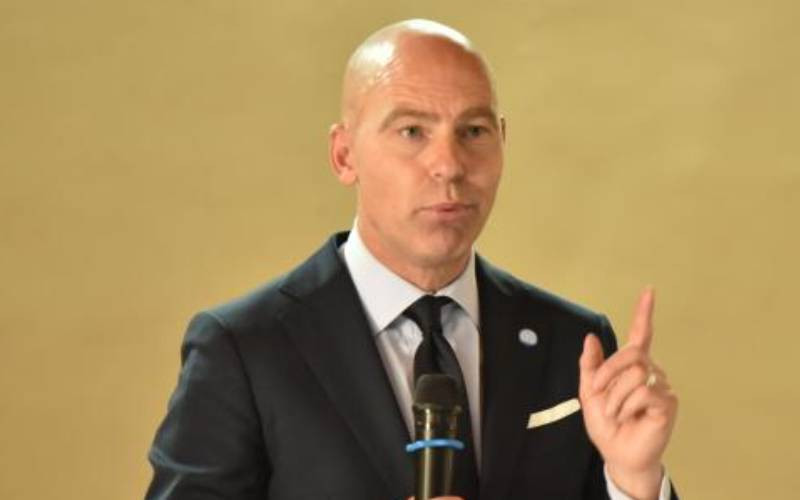By PETER MUIRURI
Any visitor to Nairobi cannot fail to notice the quiet revolution: New chic hotels are emerging in a city where older, colonial-style edifices used to rule the roost.
Some of the new kids on the block are smaller in size compared to their traditional cousins. They are also keen to indulge their selected clientele in lavish lifestyles while charging top dollar for the services.
Architectural masterpieces in their own right, they have embraced the best practices from around the globe to present a whole new world of hotel design in Kenya.
And they could not have come at the right time. In the past few years, Kenya has been touted as one of the hottest real estate address in the world, going by the numerous mega projects that have sprung up.
Thika Greens and Migaa in Kiambu; English Point Marina, Ocean Seven, Mandharini and Vipingo Ridge in the Coast; and Longonot Gate and Sergoit in the Rift Valley are among the major projects that are redefining Kenya’s property market.
As the multi-billion housing estates trend, hotels with chic architecture like Hemingways Nairobi, Villa Rosa Kempinski, The Tribe and Best Western Premier have come up. The Boma, Eka and Sankara also belong to this category.
Under construction in Upper Hill is Radisson Blu while the proposed construction of others like The Marriott is the talk of the town.
Home and Away toured a number of these resorts to find out what makes them tick.
Our rendezvous began in the leafy suburb of Karen, Mbagathi Ridge. Overlooking the picturesque Ngong’ Hills is the 45-room Hemingways Nairobi, the latest addition to the other facilities in Watamu and Masai Mara, thus completing the group’s beach, bush and boutique experience.
Former Homegrown proprietor and Hemingways Group Chairman Richard Evans explains the concept behind the sh1.5 billion investment in the city.
“We had the option of putting up this hotel either in Karen or Gigiri. However, we thought Gigiri is already congested while Karen has close proximity to both Wilson and Jomo Kenyatta airports, recreational facilities such as Nairobi Park, Giraffe Centre and the Daphne Sheldrick Elephant Orphanage. That informed our final choice of location,” says Evans.
While addressing the press during the official opening of the hotel last year, the group’s CEO Allastair Addison said the location is one of Nairobi’s historical gems owing to its contribution to the history of the country.
“We consider ourselves fortunate to have obtained ten acres of prime property in Karen of which only 20 per cent has been used for the actual building. The structures blend well with Karen’s overall theme of well-designed and spacious structures,” said Addison.
Painstaking work
Stay informed. Subscribe to our newsletter
But it was a painstaking work coming up with a hotel that was not only going to be world class but that would also fit in with the serene residential neighbourhood.
Having travelled far and wide, Evans says it was just a matter of time before he came up with the right design.
“I had seen many hotel designs in Europe. However, we settled on a model based on the historical Georgia plantation houses. They are elegant with lots of space that we have replicated here,” says Evans.
Georgian architecture came in vogue during the 18th century and comprises a symmetrical a one or two-storey building weaved around a wide, central façade, decorative crown above the front door with ornamental columns on each side.
A medium pitched roof with minimal overhangs is other characteristic of Georgian era architecture.
“The elevation of the ground floor had to be carefully set to take advantage of the Ngong Hills and we made sure each room has unobstructed view of the hills. In fact, from the moment you get in the hotel, the hills are clearly visible. Even the water feature toward the rear of the lobby had to be installed in a manner that took into consideration the therapeutic effects of the surrounding landscape,” explains Evans.
From Karen to Nairobi’s Waiyaki Way, next to Standard Chartered Bank’s regional headquarters, stands the imposing, ten-floor The Villa Rosa Kempinski hotel.
Kempinski
Commanding an excellent view of the city and the greener patches across the road, it is not hard to miss the pink edifice that has even engineered the breeding of a rose flower, the ‘Kempinski Rose’ now grown in Kenya to match the hotel’s external hue. When the hotel chain was announcing its intention to come into the local market a couple of years ago, some hotel executives referred to the Kempinski brand as the ‘Ferrari of the hotel industry.’
A chip of the 73-strong Kempinski hotels scattered in 32 countries, Villa Rosa Kempinski brings to the city the famed Mediterranean architecture primarily found in Portugal, Italy and Spain.
It is not hard to notice the prominent decorative wrought iron, Italian arcs and porches. The continental Europe architecture at the hotel boasts several fountains — from the main entrance to the much-secluded spa treatment rooms.
Mike Lord, Managing Director of Symbion Group, the company behind Villa Rosa Kempinski’s architectural design, says the hotel is an example of how ancient designs can be harnessed to create a fresh structure with facilities to suit the modern international traveller.
According to the designers, the architecture recreates a Portuguese village where the building’s warm colours contrast well with the water features and the green lawns.
“The owners of Villa Rosa Kempinski have Portuguese connections and family ties with Mozambique. The hotel took architectural inspiration from historical buildings in both countries,” says Lord.
He says times have changed as far as local architecture is concerned with more emphasis being put, and rightly so, on green technology.
“I believe that modern and future buildings in Nairobi should focus on a response to climate design, a green agenda and use of available local building materials. These goals may well be combined with an historical visual appearance, such as at Villa Rosa, or in a more contemporary style,” he says.
Symbion is also behind the design of the new hotel being developed by Green Hills Limited at Village Market.
In the same vein, it is impossible to talk about Village Market without mentioning The Tribe, another architectural masterpiece as far as hotel designs go. The Ehsani family design has gained global recognition for incorporating artifacts — over 900 — from the African continent.
In a past interview with Design Hotels.Com, Mehraz Ehsani, the Iran-born architect behind The Tribe, said it is good to break away from imposed restrictions and come up with welcoming and exciting architecture.
“It is hard not to be inspired by Africa, in particular by the effect of light and space, and the positive effect they have on people who live here. Both elements were fundamental in the design approach, creating public spaces that feel warm, comfortable and intimate while maintaining the impressive scale of the building,” said Ehsani.
According to former chair of the Architectural Association of Kenya Steven Oundo, the diverse designs currently being witnessed in the hospitality industry are largely dictated by the client. He says a number of top hotels — both new and old — have a foreign ownership and as such they do incorporate some aspects of the developer’s home country.
Oundo adds that Nairobi is a very cross-cultural city where every piece of world architecture has become acceptable giving a good architectural challenge to local professionals.
“If a developer has some British, American or Portuguese background, this will be reflected either in the structure or interior decor. The dictates of the current traveller also have a lot of influence in the design. He wants to see the wild side of Africa but also feel closer home in terms of the hotel ambience,” states Oundo.
But as the country celebrates the presence of such hospitality giants, it is not lost on the developers that the country still lacks properly trained artisans able to install world class finishes.
As Evans says, Hemingways Nairobi had difficulties getting the right individuals with the prerequisite qualifications for some jobs that required precision such as tiling.
“There is a need to come up with a government institution that will primarily train local artisans on acceptable international standards of building finishes modelled after some European countries like Germany. All the same, we believe we did our share in training many Kenyans who worked under qualified personnel,” says Evans.
As more and more such hotels make Nairobi their next stop, we are yet to see the last of the new architectural marvels.
 The Standard Group Plc is a
multi-media organization with investments in media platforms spanning newspaper
print operations, television, radio broadcasting, digital and online services. The
Standard Group is recognized as a leading multi-media house in Kenya with a key
influence in matters of national and international interest.
The Standard Group Plc is a
multi-media organization with investments in media platforms spanning newspaper
print operations, television, radio broadcasting, digital and online services. The
Standard Group is recognized as a leading multi-media house in Kenya with a key
influence in matters of national and international interest.
 The Standard Group Plc is a
multi-media organization with investments in media platforms spanning newspaper
print operations, television, radio broadcasting, digital and online services. The
Standard Group is recognized as a leading multi-media house in Kenya with a key
influence in matters of national and international interest.
The Standard Group Plc is a
multi-media organization with investments in media platforms spanning newspaper
print operations, television, radio broadcasting, digital and online services. The
Standard Group is recognized as a leading multi-media house in Kenya with a key
influence in matters of national and international interest.









